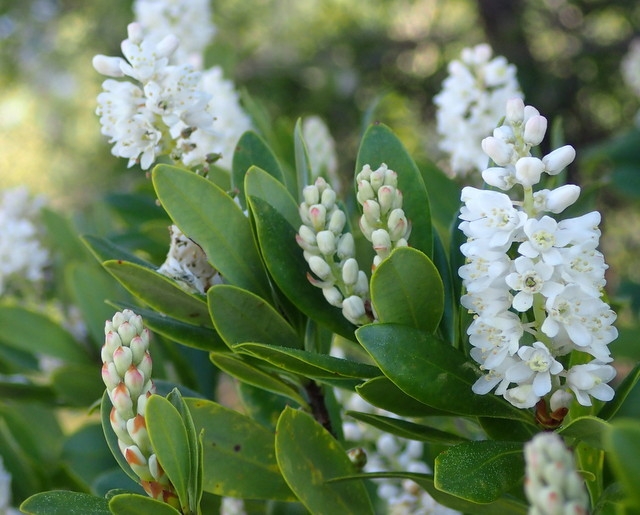Buckwheat Tree
(Cliftonia monophylla)
Buckwheat Tree (Cliftonia monophylla)
/
/

mfeaver
CC BY 4.0
Image By:
mfeaver
Recorded By:
Copyright:
CC BY 4.0
Copyright Notice:
Photo by: mfeaver | License Type: CC BY 4.0 | License URL: http://creativecommons.org/licenses/by/4.0/ | Rights Holder: mfeaver | Publisher: iNaturalist | Date Created: 2021-02-16T16:20:09-08:00 |
















































Estimated Native Range
Summary
Cliftonia monophylla, commonly known as Buckwheat Tree, is an evergreen tree or large shrub native to the wet flatwoods, swamps, and bog margins of the Southeastern United States. It typically grows to a height of 12-15 feet (4-5 meters) and a width of 6-12 feet (1.8-3.7 meters). The Buckwheat Tree has a dense, rounded to irregular form with glossy, leathery leaves that are dark green above and paler beneath. In early spring, it produces showy racemes of fragrant, pink and white flowers, which are followed by small, winged seed capsules that resemble buckwheat grains.
The Buckwheat Tree is valued for its year-round foliage and spring floral display, making it an attractive choice for residential landscapes, naturalized areas, and wetland gardens. It is also beneficial for wildlife, providing nectar for pollinators and habitat for birds. This species prefers acidic, moist to wet soils and can tolerate standing water, making it suitable for rain gardens and riparian plantings. While it thrives in full sun to part shade, it requires protection from strong winds. It is relatively low-maintenance but can be susceptible to leaf spot and root rot if drainage is poor.CC BY-SA 4.0
The Buckwheat Tree is valued for its year-round foliage and spring floral display, making it an attractive choice for residential landscapes, naturalized areas, and wetland gardens. It is also beneficial for wildlife, providing nectar for pollinators and habitat for birds. This species prefers acidic, moist to wet soils and can tolerate standing water, making it suitable for rain gardens and riparian plantings. While it thrives in full sun to part shade, it requires protection from strong winds. It is relatively low-maintenance but can be susceptible to leaf spot and root rot if drainage is poor.CC BY-SA 4.0
Plant Description
- Plant Type: Tree, Shrub
- Height: 12-15 feet
- Width: 6-12 feet
- Growth Rate: Slow
- Flower Color: White
- Flowering Season: Spring
- Leaf Retention: Evergreen
Growth Requirements
- Sun: Full Sun, Part Shade
- Water: Medium, High
- Drainage: Slow, Medium
Common Uses
Bee Garden, Fragrant, Low Maintenance, Showy Flowers, Water Garden
Natural Habitat
Wet flatwoods, swamps, and bog margins of the Southeastern United States
Other Names
Common Names: Titi, Buckwheat-Tree, Black Titi
Scientific Names: , Cliftonia monophylla, Cliftonia nitida, Cliftonia ligustrina, Mylocaryum ligustrinum,
GBIF Accepted Name: Cliftonia monophylla (Lam.) Britton ex Sarg.